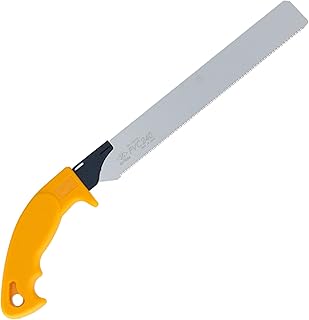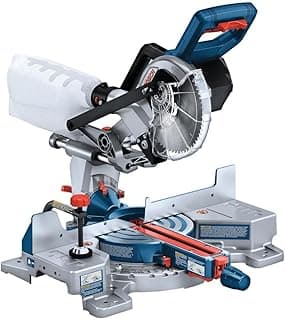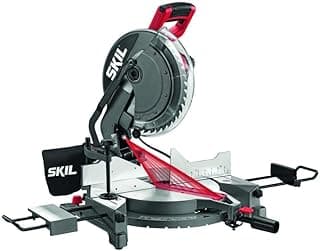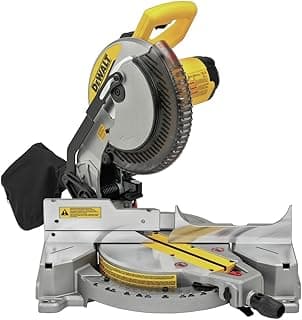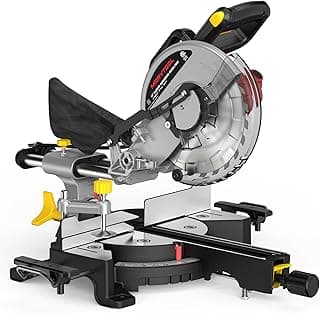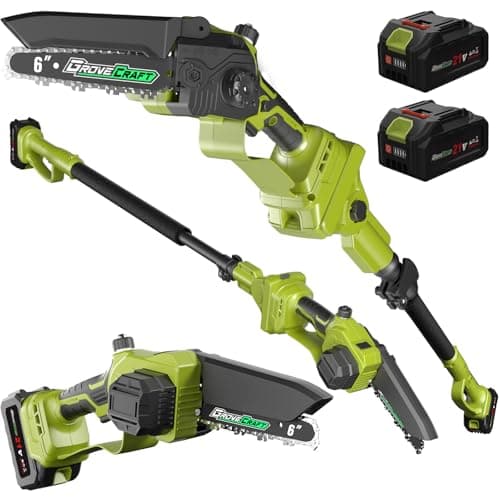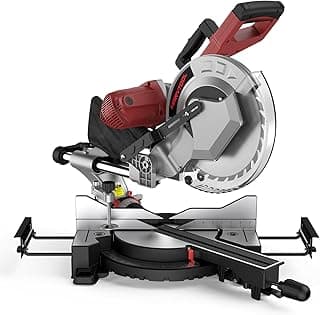When working with PVC pipes, precision and smooth edges are key. That’s where finding the best saw for cutting PVC truly matters. The right tool not only saves time but also prevents cracking and uneven cuts.
But here’s the thing—different materials require different blades. If you’ve ever searched for the best metal cutting circular saw blade, you know how specialized each cutting job can be. The same applies when comparing the best saw for cutting aluminum or even the best metal cutting saw. Each has a unique design to handle specific materials efficiently.
So, what’s the best tool for PVC? Let’s dive in and uncover the methods, tools, and pro tips that guarantee flawless results every time.
Top Picks
Adjustable Precision: 13-Inch Heavy Duty Pipe Saw - Adjustable Angle Hand Saw
This 13-inch heavy-duty pipe saw is designed to handle a variety of materials including PVC, ABS, wood, drywall, and plastic, making it a versatile tool for plumbing, construction, gardening, and DIY projects. Its standout feature is the adjustable cutting angle, which allows users to make precise cuts even in tight or awkward spaces, a functionality not commonly found in standard hand saws. The non-slip, ergonomic handle minimizes hand fatigue during extended use, while the durable construction ensures reliability when tackling tougher materials. Despite its heavy-duty build, the saw remains compact and lightweight, making it easy to carry and maneuver in confined areas. Users appreciate its ability to perform a wide range of cutting tasks without the need for multiple specialized tools, though some note that the 13-inch blade can limit the depth of cuts for larger projects. Overall, it strikes a balance between versatility, portability, and precision, offering practical value for both professionals and hobbyists.
Razor Precision: KAKURI Japanese Hand Saw [PVC Pipe, Plastic] 8-1/4" Japanese Pull Saw
The KAKURI Japanese Hand Saw is crafted specifically for cutting PVC, acrylic, and other hard plastics, offering a level of precision and smoothness uncommon in standard hand saws. Its fine-tooth blade and Japanese impulse edge quenching maintain sharpness over extended use, producing clean cuts with minimal burrs or cracks. One of the most convenient features is the quick, tool-free blade replacement system, allowing users to switch blades effortlessly for different tasks. Made entirely in Japan with high-grade steel and a TPR resin handle, the saw combines durability with ergonomic comfort. Compact and lightweight, it is easy to carry and store, with a blade cover that accommodates spare blades for on-the-go projects. Users often praise its precision and clean cutting performance, especially for delicate or visible plastic work, though the 8-1/4-inch blade limits the depth of larger cuts. Overall, it is highly regarded for specialized plastic cutting and professional-level craftsmanship.
High-Tension: AIRAJ 12 In High-Tension Hacksaw with 24 TPI Bi-Metal Blade
The AIRAJ 12-inch high-tension hacksaw is designed to handle a variety of materials, including metal, wood, PVC, copper, and steel. Its 24 TPI bi-metal blade combines toughness and rebound resilience, allowing for high-speed cutting without breaking. The robust steel frame ensures durability and stability during use, while the adjustable tension knob makes it easy to set optimal cutting pressure and replace blades quickly when needed. Lightweight yet sturdy, the saw accommodates various DIY and professional applications, from pipe cutting to metal fabrication. Users appreciate its versatility and reliable performance, though the 4-inch maximum cutting depth can be restrictive for larger materials. Overall, it delivers dependable precision and durability for both occasional and frequent users.
FAQs
What saw is good for cutting PVC?
Several types of saws work well for cutting PVC, depending on the pipe size and precision required. For small household projects, a fine-tooth hacksaw is one of the most accessible and effective tools. It delivers clean, controlled cuts and requires minimal setup.
For larger or frequent jobs, a miter saw or reciprocating saw offers faster, more consistent results. A miter saw ensures straight, even cuts, especially when paired with a fine-tooth or plastic-specific blade. Meanwhile, a reciprocating saw provides flexibility for cutting pipes already installed in tight spaces.
Lastly, a PVC pipe cutter—a ratcheting tool designed specifically for this material—works best for thin-walled or smaller-diameter pipes. It offers smooth, burr-free results with minimal effort.
How to best cut PVC?
To achieve the cleanest cut on PVC, follow these steps:
-
Measure and mark the pipe using a pencil or marker.
-
Secure the pipe firmly with a clamp or vise to prevent movement.
-
Choose the right tool—a hacksaw for manual work, or a miter saw for precision cuts.
-
Cut slowly and steadily. Avoid forcing the blade, which can crack or melt the PVC due to friction.
-
Deburr the edges using a utility knife or sandpaper for a smooth finish.
For professionals, using a blade designed specifically for plastics can make a noticeable difference. It reduces chipping, friction heat, and plastic residue buildup.
Can I cut PVC with a multi tool?
Yes, you can cut PVC with a multi-tool (oscillating tool) if you use the right blade. A fine-tooth or segmented blade designed for plastics provides smooth, controlled cuts without melting the pipe.
Multi-tools are ideal for small adjustments, trimming, or cutting pipes installed in confined spaces. However, they may not be the fastest option for long or thick PVC sections. The key is to let the tool’s oscillation do the work—apply gentle pressure and keep the blade cool to prevent melting.
Can I use a circular saw to cut PVC?
You can use a circular saw to cut PVC, but caution is necessary. A standard wood-cutting blade with too many teeth can overheat the material, causing melting or rough edges. Instead, opt for a blade with fewer teeth—around 40—to minimize friction.
Before cutting, secure the pipe and wear protective eyewear. Always start the saw before it contacts the PVC to prevent chipping. For thick or industrial-grade pipes, consider using a plastic-specific circular saw blade for optimal results.
While a circular saw is fast and efficient, it’s best suited for straight cuts on large-diameter PVC where precision and speed matter most.
Final Thoughts
Choosing the best saw for cutting PVC depends on your project’s size, precision needs, and available tools. A simple hacksaw or PVC cutter is great for light-duty tasks, while a miter or circular saw provides speed and accuracy for larger jobs.
By understanding the right techniques—and pairing your tool with the proper blade—you’ll achieve smooth, precise cuts every time. Whether you’re a DIYer or a professional, mastering these methods ensures your PVC projects look clean and perform flawlessly.


![KAKURI Japanese Hand Saw [PVC Pipe, Plastic] 8-1/4" Japanese Pull Saw with Blade Cover, Made in JAPAN](/_next/image/?url=https%3A%2F%2Fm.media-amazon.com%2Fimages%2FI%2F5167yFHzSuL._AC_UL320_.jpg&w=640&q=75)









